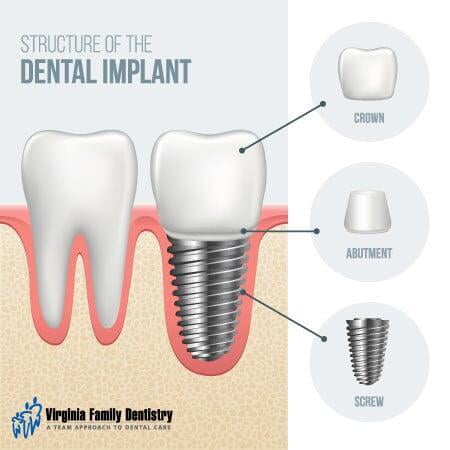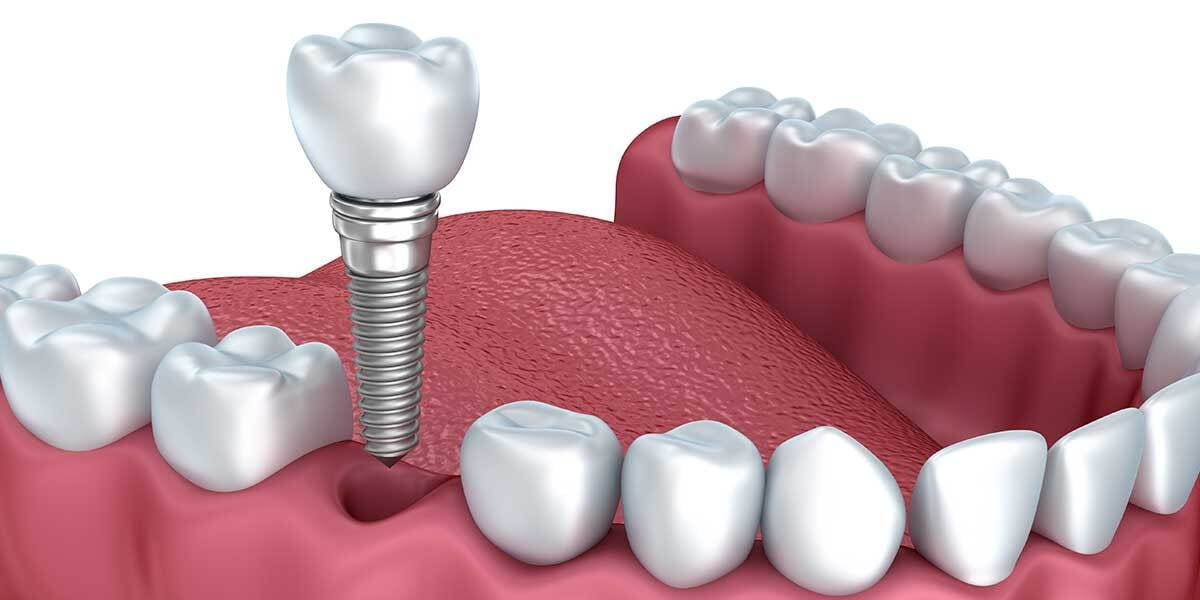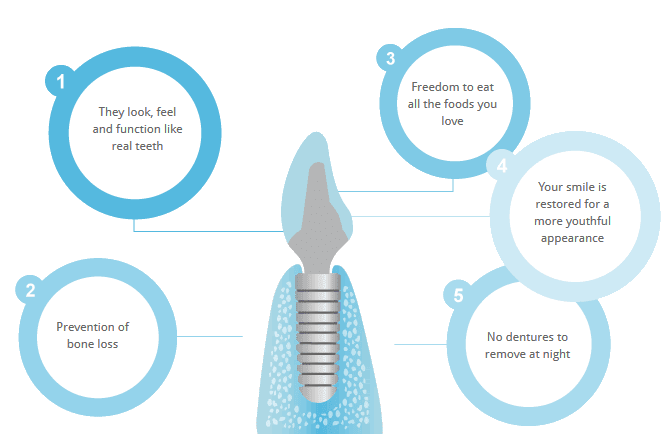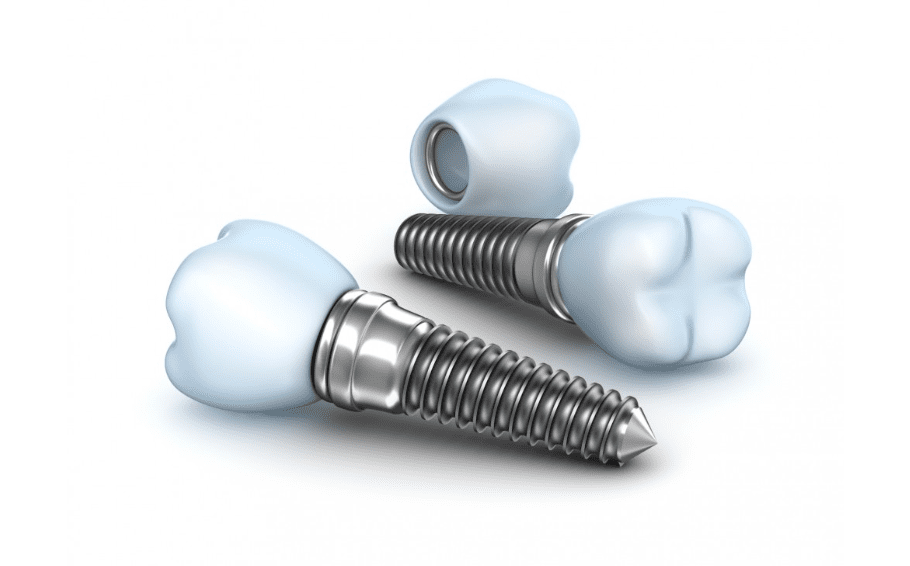Dental Implantology

What are Implants?
The dental implant is an artificial tooth root that is inserted into the jawbone (either the maxilla or the mandible). It often takes the form of a screw that is composed of titanium or titanium alloy.

Implants replace missing teeth
Dental implants can be considered for patients who are missing one or more teeth.
A dental implant alone does not replace a natural tooth. An abutment must be mounted on the implant once the latter has been inserted into the jawbone.
Depending on the number of teeth to replace, an artificial crown, a full or partial denture or a bridge will be prepared and installed on the abutment(s). If the patient only has one missing tooth, a single crown will be sufficient. If several teeth need to be replaced, many options are available: using a single implant with multiple crowns joined by a bridge or a prosthesis, or using multiple implants with distinct crowns. This choice is up to the patient, according to the treatment plan recommended by the implantology specialist.

Benefits of dental implants
When a patient has lost one or more teeth, dental implants have multiple advantages over other treatments involving removable prostheses.
- Implants allow the installation of fixed or removable dental prostheses.
- They are more comfortable and discreet because they do not cause any unpleasant friction or movement on the gums as in the case of removable prostheses that are not mounted on implants (e.g.: partial or complete dentures). It is possible to get an implant-supported denture that does not even cover the palate at all.
- No adhesive (denture glue) is required to hold the implant-supported prosthesis in place.
- Implants offer a better stability to artificial teeth, which facilitates chewing and digestion, improves comfort and facilitates speech.
- The patients are not forced to adapt their diet.
- Implants allow distributing chewing forces between implants and adjacent structures of the mouth (gums, bones and remaining teeth), which helps to reduce the stress on these structures. When healthy teeth are still in the mouth, the patient can expect to be able to keep these remaining teeth longer than if no implant was installed and if the space created by missing teeth remained vacant.
- Implants contribute to the preservation of the alveolar bone (the bone that supports teeth) by preventing its resorption where teeth are missing. In fact, when a tooth is missing, the alveolar bone that used to support it is not stimulated anymore and deteriorates gradually.
- Implants do not require grinding and modifying adjacent teeth (like in the case of a traditional bridge).
- Implants give the impression of having natural teeth, both aesthetically and functionally, and act as an artificial root anchored in the bone of the jaw, like a natural tooth root. The patients may, therefore, regain the integrity of their facial features that had been affected by the loss of several teeth.
- The two main components of an implant (the artificial crown and the implant itself) will not be affected by tooth decay.
Once osseointegration is complete, the implants rarely need to be replaced and therefore offer a reliable and long-term solution. Despite the high initial cost, the dental implant is a good investment given its life expectancy.

Implant procedure & Costs
The insertion of dental implants is a surgical procedure that is usually performed at the clinic and under local anesthesia.
Several dental health professionals are qualified to install dental implants: dentists, oral and maxillofacial surgeons, periodontists and other specialists in dentistry. These professionals must have extensive implantology training. Dentists and prosthodontists often specialize in the fabrication of crowns, bridges and dentures that are mounted on the implants.
The costs of dental implants are separated into two categories:
- The cost of surgery (when dental implants and abutments are inserted in the patient’s jaw) & the cost of the prosthetic restoration (crown)

Historical background
It was during the 1950s that Swedish Per-Ingvar Brånemark discovered the biocompatibility of titanium with the human body. After many years of research, it is finally in the middle of the 1980s that the dental implant technique became known and started to spread around the world.
Professor Brånemark, who is recognized as the father of modern dental implantology , is also the one who discovered the phenomenon of osseointegration, the ability of living bone to fuse to titanium implants. Osseointegration anchors solidly the implant into the jaw, just like a natural tooth root. As a matter of fact, it is shown that titanium dental implants are resistant to chewing forces and reliable in the long term. Moreover, when osseointegration is completed around the implant, the only way to remove this implant is to drill the bone that lies around it.

Titanium, a biocompatible material
The concept of implant rejection, a complication that used to occur when implants were made of materials that could not be osseointegrated (e.g.: steel and tantalum), has disappeared with the advent of titanium (a biocompatiblematerial).
Implantology is becoming increasingly widespread and it is taught worldwide in all dentistry schools. So far, millions of osseointegrated implants have been inserted in the mouths of patients who were missing one or more of their natural teeth.
